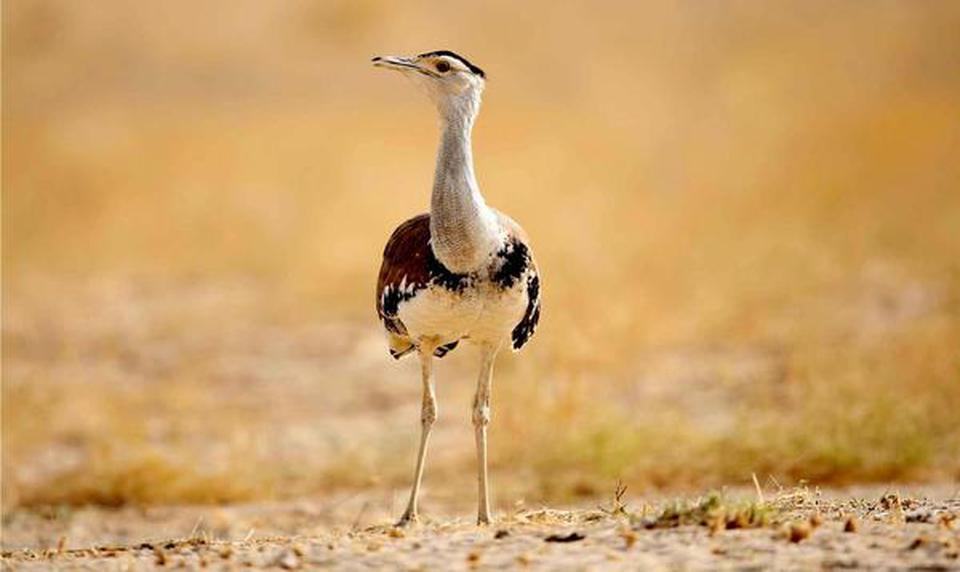
The bird has disappeared from 90% of its original range.
Several threats — including power lines — are sealing the fate of these charismatic birds
We’ve read those stories of recent extinctions — Sudan, the last male northern white rhino and Brazil’s Spix’s macaws — with much consternation. But closer home, a tale of extinction may be unfolding before our very eyes: the great Indian bustard, that narrowly missed being christened India’s national bird, is now teetering on its last legs. Several threats — including power lines — are decimating bustard populations. India, effectively the only home of the bustards, now harbours less than 150 individuals in five States.
Game bird
What changed after 1969, when over 1,000 of these large, stately birds still roamed the dry grasslands of 11 Indian States? While hunting was probably one of the first factors (the bird was a popular game bird and still is in some pockets, despite being listed in Schedule I of India’s Wildlife Protection Act), bustard habitats have undergone tremendous change over the last decades. The untamed, arid grasslands that bustards thrive in are categorised as ‘wastelands’, like most grassland habitats in India. The push to make these areas more ‘productive’ has seen an increase in water availability in these parts, resulting in the spillover of agricultural land into bustard habitats. Yet the birds do rely on agricultural fields too, suggests the only study of their diets to date: in the mid 1980s, researchers found that though they are predominantly insect-eaters, bustards “relished” arugula plants and ate cultivated Bengal gram and Ziziphus or ber berries. More recent but unpublished data also suggests that the wide-ranging birds disperse to agricultural landscapes near Gujarat’s Kachchh during the non-breeding season. Yet, intensification of agriculture — including more pesticides, barbed-wire fences and new crops — could endanger the birds’ survival in this landscape. More recently, what remains of their grassland homes are now sites for renewable power projects. With new wind turbines, come more power lines to take the ‘green’ energy to grids and homes.
Bustards, with their poor frontal vision and heavy bodies, cannot manoeuvre away from cables in time. On a survey over the last year, the Wildlife Institute of India (WII) found four bustards charred to death due to collisions with power lines in the Thar landscape alone. Their report published in October suggests that around 18 bustards are likely to die every year (from a population of around 128 in the Thar) due to high-tension cables that intersect priority bustard habitat here. The situation is so dire that three non-profits — the Corbett Foundation, Conservation India and Sanctuary Nature Foundation — have initiated an online petition (which has already garnered more than 6,000 signatures) to Union Power Minister R.K. Singh to demand that power lines be routed underground. But apart from power companies and the government, local communities are the primary stakeholders here, says Sutirth Dutta, faculty at the WII, who has been studying bustards for 10 years now.
Breeding centre
“A landscape-level approach that will incentivise people to take up less intensive agriculture is required,” he said. Talks for a bustard conservation breeding centre in Rajasthan are ongoing, and land will soon be allotted, he adds.